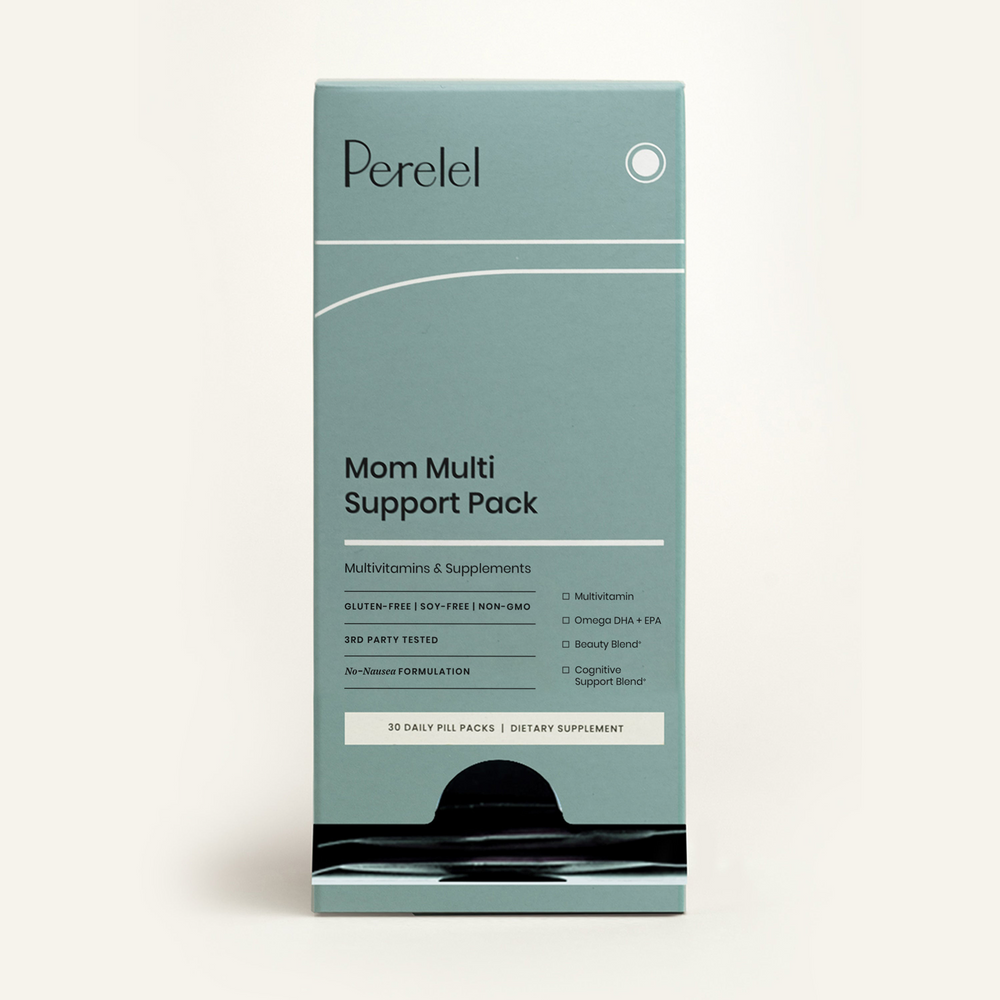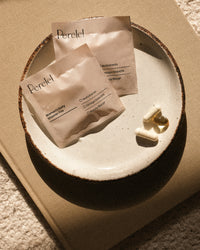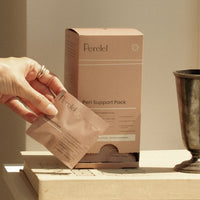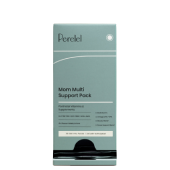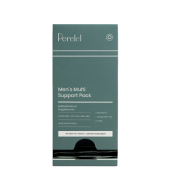People usually learn how to push when they’re in the middle of giving birth. But there’s no reason we have to wait until labor to learn this new skill. You can learn it now. You can even practice it now.
What is actually happening when you push?
Your baby has to pass through your pelvis, a structure of bones at the base of your spine, to enter the birth canal. The good news: the pelvis moves and adapts during labor.
During pregnancy, relaxin (an aptly-named hormone) relaxes the ligaments that hold together the bones of your pelvis.
Your pelvic floor muscles cover your pelvic bones and stretch to make way for your baby. Just like the pelvis itself, these muscles are flexible. Think of them like a trampoline. Your pelvic floor can take all that pressure as you push during labor.
When do you push?
Pushing is exhausting, so you want to wait until the right time. A few things need to happen first:
-
Your cervix dilates to 10 centimeters.
-
It also completely thins out (“effacement” in medical speak).
-
Your baby starts moving into the birth canal (a.k.a. the vagina).
How will you know it’s really time? A couple possibilities:
-
You feel the involuntary urge to push or poop during a contraction.
-
Your labor is medicated, so you don’t feel the urge, but your doctor tells you it’s time by placing their fingers inside of your vagina to feel for the baby’s head.
Is there a way to practice for the real thing?
Muscles hold memory. That’s why it’s great to practice pushing before you’re in labor. It’ll make the real thing that much easier—and more familiar.
-
Practice peeing.
Yes, really. Only (and you thought this couldn’t get weirder) imagine you’re pushing your pee down and out in front of you. That’s because your baby follows a J-shaped path out of your body.
-
Pretend you’re pushing out a tampon.
Maybe you’ve heard pushing compared to pooping. It’s more like pushing out a tampon. Those are the forward muscles you need to engage. Don’t have tampons? If it’s comfortable for you, try putting your finger in your vagina and pushing it out.
-
Blow up a balloon.
Swear we’re not trying to make you laugh with these suggestions (although that would be a good exercise for activating your stomach muscles). Try blowing up a balloon and take note of how it activates your diaphragm. Push from there.
What are some techniques to try?
There’s practice and then there’s the real thing. During labor, try out these techniques and see what works best for you.
-
Act like a football player. You know that “hut” sound they make? Try it out at the start of a push—it engages just the right muscles.
-
Push in a J-shape. Remember, that’s the path your baby follows out of your body. While bearing down, imagine you’re pushing your baby down and then slightly forward.
-
Try a mouthguard. It sounds weird, but it relaxes your jaw muscles, which can relax your pelvis, too. That’s because your jaw and pelvis are connected through tissue (a.k.a. fascia).
-
It’s all in the breath. Let out a gentle sigh, then take in a big, big breath of air. Hold it and push, push, push. After holding for five seconds, slowly let out the air.
This is a two steps forward, one step back kind of thing. As your baby’s head moves down with each push and contraction, it also slides back up during the rest periods.
Which positions are best?
Remember your pelvis, that flexible structure of bones that your baby passes through? Try these positions, which help open the pelvis, making pushing that much easier:
Side-lying: Lie on your side and place a peanut ball—an exercise ball shaped just like you’d expect—in between your legs.
Hands and knees: This one’s a lot like doing cat-and-cow poses in yoga. If you want some support, try this position while resting on top of a birthing ball.
Squatting: This one not only opens up your pelvis, it also gives you a welcome assist from gravity.
Keep in mind: Labor bars can be added to a hospital bed to help you curl up around the baby.
Shop the Article:
How do you talk about it?
It’s a great idea to talk about pushing with your doctor, midwife, and support team before and during labor. Here are a few scripts to inspire you:
“Can you count to five for me while I’m pushing?”
“I need some words of support while pushing. Things like, ‘Keep going,’ ‘You’re doing so good,’ ‘That’s it,’ ‘You’re killing it.’”
“Will you squeeze my hand while I’m pushing? It helps me bear down and focus.”
“Can I wait to push until I feel the urge?”
“Can you put a mirror in between my legs so I can see my progress?”
“Since I’ll have an epidural, I know I won’t feel the urge. Can you let me know when it’s time to push?”
Takeaways:
-
Practice peeing in a J-shape, pushing out a make-believe tampon, and blowing up a balloon. These routines are as weird as they are effective.
-
Try positions that open up your pelvis, like side-lying and all-fours.
-
Say “hut!” like a football player at the start of a push to activate the right muscles.
-
Push in a J-shape, since that’s the path your baby will follow out of your body.
-
Use a mouthguard to relax your jaw and your pelvis, which are connected via tissue.
This article is for informational purposes only. It is not, nor is it intended to be, a substitute for professional medical advice, diagnosis, or treatment and we recommend that you always consult with your healthcare provider. To the extent that this article features the advice of physicians or medical practitioners, the views expressed are the views of the cited expert and do not necessarily represent the views of Perelel.
Resources:
LOOM (2021). How To Push.
Your baby in the birth canal: MedlinePlus medical encyclopedia. (n.d.). MedlinePlus - Health Information from the National Library of Medicine. https://medlineplus.gov/ency/article/002060.htm#
Dehghan F, Haerian BS, Muniandy S, Yusof A, Dragoo JL, Salleh N. The effect of relaxin on the musculoskeletal system. Scand J Med Sci Sports. 2014 Aug;24(4):e220-9. doi: 10.1111/sms.12149. Epub 2013 Nov 28. PMID: 24283470; PMCID: PMC4282454.
What you should know about your pelvic floor: Pre-pregnancy, during pregnancy and after giving birth. (2017, November 21). Queensland Health. https://www.health.qld.gov.au/news-events/news/pelvic-floor-pre-during-pregnancy-birth-exercises-physiotherapist
Villines, Z. (n.d.). Cervix dilation chart: Stages of labor and what to expect. Medical and health information. https://www.medicalnewstoday.com/articles/322615



